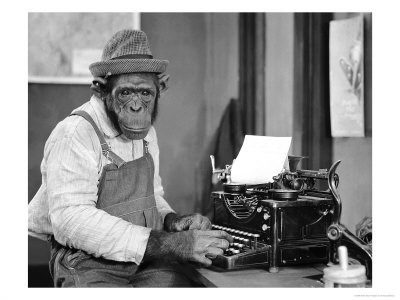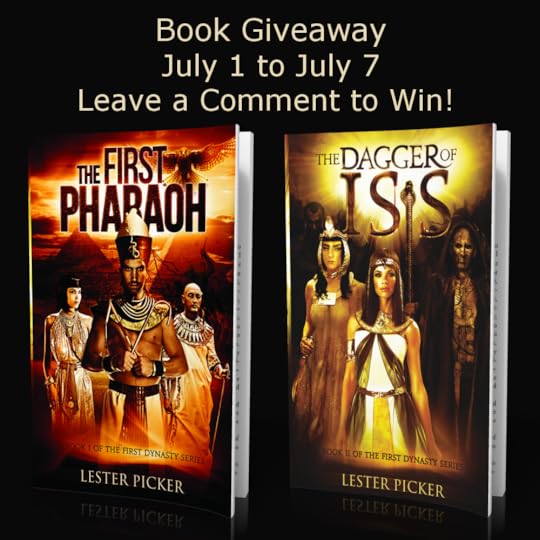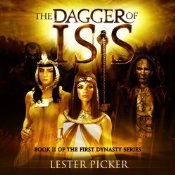Lester Picker's Blog, page 3
November 13, 2013
An Apology
The third novel in my First Dynasty series about Ancient Egypt was due to be completed by the end of this month. Sadly that will not happen and I am offering a sincere apology - and an explanation for the delay - to my loyal fans.
Here is what happened; lots of foreign travel assignments slashed my writing time. Then, after long contemplating moving our home and my office, we finally bit the bullet (where the heck does that expression come from??) and bought a place. That has entailed all the distractions of moving and fixing up one home for sale and another for living in.
Now I am the type of writer who needs long periods of uninterrupted concentration to write effectively. I need to live in my characters heads so that I think about them and the trials and tribulations they face. I simply cannot dip my toe into the story as chance allows. I have to carve out my writing time and even vigorously defend it. Thankfully my understanding wife supports that neurosis.
In any event, I am committed to getting back to the story line and have even had some interesting plot ideas rolling around in my head during this break. Please stay tuned for updates. And, thanks for your positive and inspiring comments about the first two books in the series: The First Pharaoh and The Dagger of Isis, both available on Amazon.
August 26, 2013
Don't End With What You Finished
Here’s a little tip that I’ll share with you. A fellow writer with whom I write every Tuesday morning, urged me to share this with you. I suggested it to him one day when he complained to me about a motivation problem as he faced a blank page the morning after finishing an important chapter in his novel. He has used this tip ever since with a good deal of success.
In a nutshell, I always recommend that you never end your writing session if you just finished a chapter. Always begin at least the first paragraph of your next chapter immediately and only then quit. That way, you don’t face the daunting project of a blank page at your next writing session, especially if more than a day will have passed before you can get back to your keyboard.

In fact, I try to follow that advice myself every day. I like to end the day with something still left to write, so I am motivated to get going, cup of morning tea in hand, the next morning.
August 25, 2013
What's - Like - Happening With How Young People Talk?
My wife and I were in Barnes & Nobles today (yes I still visit a “real” bookstore when I can) and two young adults, perhaps 21 and 19, sat next to us. They began talking, actually talking a great deal, about personal stuff. To be candid, the stuff they were talking about was far too personal for public conversation, as in sex, bondage and drugs. But that’s aside from the point.
Do young people today not realize how many times they use the word “like?” I can honestly say that for the five minutes I focused on their rather loud conversation, not one solitary sentence went by without at least one “like.”
“It was… like… I went to the party and I… like… you know, like… Shawn was like there and it was not like I expected him. I’d never… like… have gone over to him. It’s… like, something about…like…”

This is not some made-up snippet of conversation. I was typing as quickly as I could and the paragraph above is verbatim what this one rising college senior actually said. Shawn, of course, was changed to protect the innocent. And, BTW, the word “like” usually precedes a quick stop, similar to a glottal stop in some languages.
My God, where have all the English teachers gone? Probably spending a long time passing; passing kids who need more conversational guidance. And how about parents, older friends, grandparents? Doesn’t anyone hear this insecure talk and have enough invested in their youth to actually correct them? How did this aberration of normal conversation actually start?
I hear this obsession with “like” in young people everywhere. Last week I was listening to a young professional adult on NPR and she used like at least 100 times in the interview. I was, like… stunned.
When I owned a publishing company, there was no way I would have hired someone with such obvious conversational flaws. Am I being too critical? Does this constant, almost obsessive, use of “like” bother any of you? I’d love to hear your opinion on this, like soon.
August 14, 2013
Novel 3 in Ancient Egypt Series: An Update
Well, for those of you who have read the first two novels in my First Dynasty Series- The First Pharaoh and The Dagger of Isis- I hope I have some good news for you.
Novel 3: A Progress Report
The third book in the series is coming along well. I have outlined it and just today completed Chapter 13. My guess is that Chapter 13 will end up being Chapter 15 or 16 by time I am through, since at least three of the previous chapters are w-a-a-a-y too long. I’ll need to go back in and rework them and split them into shorter chapters.
My outline tells me that I will need 25 chapters (maybe 28, given the above). Unfortunately, I can never be sure of that, since my characters often end up doing the damnedest things and by time I extricate them from their messes, the novel could be 30 or more chapters.
In a way that could be a win for you, my wonderful readers. On the other hand, if you’re looking for a quick read that could be a bummer. But for those of you who liked Books I and II, and there are a whole bunch of you out there given my ratings on Amazon and Goodreads (Thank you!!), get ready for a lot more intrigue, conflict and romance, all set in the historical setting of Ancient Egypt some 5,000 years ago!
I’ll continue to keep you posted on my progress, so tune in from time to time. I’d love to hear your comments, suggestions for interesting plot developments, cover design ideas… whatever strikes your fancy.
July 3, 2013
Outlining Your Books
I recently responded to an online post that asked whether writer’s of historical fiction outline their work before actually sitting down to write. This was intriguing to me for several reasons.
Who Needs An Outline?
First, I have written more than 650 non-fiction articles in my career, for major publications including Forbes, Better Homes & Gardens, Money, and dozens of others. For five years I was a weekly columnist for a major newspaper and I’ve been a columnist for several magazines. I can honestly say that I rarely outlined during that part of my career.
Oh, I did jot down notes of items I wanted to include, but if the truth be told they were more like words and incomplete phrases. I knew from an early age that a story needs a beginning, middle and end.
I also think being a public school teacher for many years helped my writing. I understood at an intrinsic level how to explain something in a sequential manner. My training as a biologist also helped because science is a strict mistress and if you want to understand scientific concepts you usually have to proceed sequentially.
When I was in my mid-twenties a contaminated food source made me desperately ill for two months and I had to take off from work, including a part-time job as a reporter for a local newspaper (probably the best writing lessons I ever learned came from that job). After about four weeks, I could not take the boredom any longer, and sat down at a used gray, upright Underwood typewriter to pen a novel, my first.
I was cocky enough to know that I did not need an outline. I had learned the discipline of churning out readable words to meet a 5:00 PM typesetting deadline (yes, Virginia, our newspaper still typeset in those days!). The important thing, I knew in my wide and deep experience as a novelist, was to have a solid concept, the heart and soul of my story. With that the pages would fly from the typewriter.
And, they did! In a few short months I had completed what was undoubtedly the absolutely worst piece of drek (that’s crap in Yiddish) that had ever been spewed forth by that, or any other, Underwood. It wandered, it sidetracked, it leaped across time and space, it had logical gaps. It was awful. Thank God it never saw the light of day. To this day it sits in one of my filing cabinets and on days when I need cheering up, I take it out, read a few pages, cringe, and put it back, knowing how far I’ve come.
Yes, I Outline!
Fast forward 40 years and if there is one thing I’ve learned from my novel writing it is to outline. I am an inveterate, careful, even meticulous outliner. Like the teacher I have always been, allow me to elaborate. It might help those of you who are new to the game of penning novel.
Of course, I always start with a concept, a story core that will be the backbone of the novel. Once that is set in my mind, usually after days of rumination in the shower, while exercising or as I fall asleep, I commit it to an electronic file. In one case, my novel titled The Underground I actually woke up at 3:00 AM having had a particularly vivid dream. I went downstairs and typed up the story and by 7:00 AM I had it fleshed out and a broad outline of the first few chapters. Amazing, yes, but that has only happened to me once.

For another of my books, Sargent Mountain I wrote ten chapters before stopping and fully outlining it.

Here is what is more usual. I start with that story concept and write a paragraph or two about it. As characters develop and more plot lines emerge in my mind’s eye, I add that, until I have a page or two of typed text.
Next I start outlining characters. Now at this point I should say that I have been using the word processing program Scrivener for the past couple of years, which to me is a great program for writers. One of its many features is that it includes a template for characters, so that I can flesh out my character’s physical description, quirks, motivation, relationship to other characters, etc. Very helpful.
Developing my characters means that I am beginning to be immersed in the novel, which also means I get more ideas about plot and story arc. That, in turn, means I am continually revisiting my original 1-2 pages of narrative, expanding, revising, eliminating. This two-way iterative process often takes weeks.
I am someone who benefits from what is known as “simmering.” I like to step back and let things simmer in my mind for days, thickening the stew, so to speak. After each of these simmering periods I revisit the outline and find new and interesting plot twists to add. So far, so good.
The Final Push
Now I’m ready to complete my outline, although this next part I consider the most difficult. I now parse the story into discreet chapters.
This process again takes weeks. With the outline in one window, I slice and dice the action in a chapter-by-chapter outline in a second window on my computer. I might end up initially with 15 or 20 chapters, but by time I am done, I’ve usually added a few more.
I could say that now I am ready to actually write the novel. However, what more likely has happened by now is that I have already started Chapter One, at least a few paragraphs of it. I like to know that I have tackled the opening, which for me is hardest to nail down. In some cases I’ll write a few thousand words, much of which will eventually be revised or even cut, but at least I’m over the psychological barrier of getting started and since I still have outlining to do, I have the satisfying illusion that I’m ahead of the game.
Once the chapter outline is done, I have a solid framework from which to write. When I start a new chapter I simply cut and paste the outline for that chapter into the new chapter file, so that it is always there for me to reference as I write.
Another major advantage of outlining is that writer’s block is reduced to a minor annoyance. Can’t get motivated? Look at your outline and it will tell you what to do next. Of course that presumes that you’ll be able to put butt to seat and type. When I’m blocked by not knowing how to start a particular scene, I can leave it and go on to another scene in my outline that I am juiced about writing.
Naturally, as I get enmeshed in the story, I see new plot lines, new areas of conflict, and new directions to propel the narrative forward. My characters begin showing me their true colors, and scenes that I had clearly mapped out can morph into something entirely different. Instead of resolving a scene with lots of conflict, I may now decide to postpone resolution for a chapter or two. A love affair that I intended to wrap up in one chapter now stretches over two or three. As it turns out, perhaps 75-90% of the time my basic outline holds.
A couple of there things to point out. As I outline I may need to draw a character map to get the relationships straight in my head. Or, in the case of my Ancient Egypt novels, The First Pharaoh and The Dagger of Isis, I might need to create a map or two to keep the action locales straight in my head.

Since I sometimes write historical fiction, I also get sidetracked frequently as I outline by the need to research this or that to see if it is historically accurate. Another thing I love about Scrivener is that it allows me to simply drag and top an Internet reference into a research folder on my desktop so I can call it up instantly as needed.
That is how I outline. Anal? yes; helpful? another yes; indispensable? a perfect trifecta for me. If you would like to share your views on outlining or your methods for doing so (or avoiding doing so), please feel free to add your comments. In any case, I hope this has helped and best of luck with your writing!
July 1, 2013
My Novels- FREE!
Here’s an exciting opportunity! This week, the Historical Novel Review website is featuring my two Ancient Egypt novels. I wrote a guest blog for the site, and was interviewed by them. Both are online right now.

If you simply post a comment on my guest blog, you are eligible for one of five signed, soft-cover copies of each novel… FREE! My guest blog is a candid and revealing look at why I write.
My first novel in the three-book series is The First Pharaoh, about the life, loves, battles and court intrigue surrounding King Narmer, the man who first united Upper and Lower Egypt under one rule in 3,100 B.C. The book is getting mostly 5-star reviews on Amazon and Goodreads.
The sequel is The Dagger of Isis, which is about Narmer’s great-granddaughter, the first female ruler of Egypt, who served for 17 years as regent until her son came of age. Her life was not easy, as her rivalry with her cousin framed her life amidst wars, loves and shifting allegiance in the Royal Court.
I look forward to your comments and Good Luck on the drawing!
June 27, 2013
If I Had Made This Up
An Ancient Egyptian statuette that apparently rotates on its own? If I had made this up and used it in one of my novels, I could see reviewers having a field day with it!
Anyway, for pure fun and amusement, check out the true story here and watch a video of the mystery statuette.
May 16, 2013
The Dagger of Isis Now Available in Audio!
I am so excited to post this. The Dagger of Isis, the second book in The First Dynasty Series, is now available in audio.

Once again, this second novel is narrated by the incomparable Adam Hanin, whose rich and melodic voice is only matched by his acting abilities, as he switches from character to character, lending each a unique voice. More than that, Adam is uncannily able to age his voice as the characters age through the sweeping historical novel.
If you’d like to know more about how Adam’s and my collaboration works, check out this previous blog.
Ancient Egypt is a rich source of material for we historical novelists. I chose to focus on the very first Dynasty because I was always curious as to how the Dynastic tradition started. Who was it that had the vision to create a unified Egypt, a civilization rich with ritual and tradition, that was to last more than 3,000 years? I found those answers and I wove two tales (the third and final one I am now writing) in The First Pharaoh and The Dagger of Isis. Both are available on Audible and Amazon.
I hope you enjoy them both. The First Pharaoh is enjoying terrific reviews, both in written form and on audio. Please remember to review the books on Amazon, Goodreads and elsewhere after you have read or listened to them.
As always, a big thank you to my loyal readers for your continued support, critiques and suggestions.
April 16, 2013
We Are Halfway Through!
Exciting stuff. Adam Hanin, the narrator for my upcoming audio book on Audible.com just completed the halfway chapter! The Dagger of Isis is gaining momentum and should be ready for you to listen to and to treasure very soon.
Our hope is to have the book ready for you by early May. Judging from reactions to the prequel, The First Pharaoh, you folks are in for a treat. I love Adam’s various voices, his acting ability, and his passion for the story itself. It shows in the way he approaches the work.
If you’d like to know more about how our collaboration works, check out this previous blog.
April 15, 2013
Kindle Direct Publishing
Today I am The Decider. After reviewing my sales stats and researching this topic ad nauseum on the Web, I’ve decided to sell all my novels exclusively on the Kindle Direct Publishing (KDP) platform.
I know, I know. There is this whole exclusivity argument regarding Amazon. They are too big, too bold, too this and too that. But the facts speak for themselves, at least in my case. Over the past few months since my four novels went on sale, 95% of my sales have been through Amazon.
By using KDP, I get some perks that I wouldn’t have in any other publishing platform. For example, every time an Amazon Prime member borrows a book, I get paid. I can also put my book up for “free” days every so often, which stimulates interest, garners reviews and improves word-of-mouth sales. Besides, the beauty of electronic publishing is that as the other publishing platforms up their game I can simply increase my distribution platforms to bring them into my marketing. Anyway, that’s my story and I’m sticking to it… for now.




